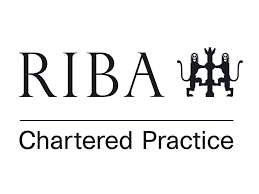The simple answer is NO.
This question has been a concern for many of our clients, our sector and ourselves, since the Building Safety Act (BSA) came into force. There has certainly been a wide spread belief in the industry that for all HRB works, the issue of a Completion Certificate from the Building Safety Regulator (BSR) is required prior to occupation. We believe the reason is that most of the widely used government and industry guidance documentation is generalised and details the Gateway 3 approval process stressing the absolute requirements for approval prior to occupation.
Whilst an application must be made for a building completion certificate, there is nothing in building law to stop that relevant part of the building to be occupied while the application is being assessed by the BSR. The offence of occupying part of a building without a completion certificate does not apply to building work in an existing hospital or care home.
However, for buildings other than hospitals and care homes, when looking at the relevant section of the Act itself in Regulation 76, it identifies the type of work that the ‘Requirement for Completion certification before occupation’ applies.
Extract from the Act:
Requirement for completion certificate before occupation
(1) This section applies if any of the following works are carried out—
(a) the construction of a higher-risk building;
(b) the creation of additional residential units in such a building;
(c) works to a building that cause it to become a higher-risk building.
(!) Tip: It is essential to check whether your project falls under these requirements, as it is an offence to occupy the relevant part of the building prior to receiving the relevant completion certificate.
However, if the works do not fall under the above types, the client can take possession of the areas and occupy upon completion of the works.
Evidently, the regulations allow for the works to refurbish, reconfigure or extend much needed clinical spaces in existing HRB hospitals to become operational immediately upon completion, avoiding extended periods of non-use. Especially since it is apparent from our experience in HRB schemes that the Gateway 3 approval process has been taking longer than the prescribed 8-week timescale, with multiple EoTs requested by the BSR, citing reasons that included complications with the new system and extended statutory consultation periods.
The above was reiterated to us by the BSR Regulatory Lead on one of our recently completed works on an existing HRB hospital, allowing the newly formed valuable spaces to be occupied without having to wait for Gateway 3 approval since the work did not fall under the aforementioned requirements.
Hopefully, this information will spread quickly to all NHS Trusts and help them with any projects going forward when it comes to the completion of works on site and occupation.
If you have any questions or you are unsure, seek the advice of a professional from the Building Control department at your local council, a Registered Building Control Approver or an architect. We would certainly be happy to assist if you want to contact us at [email protected].











Leave A Comment